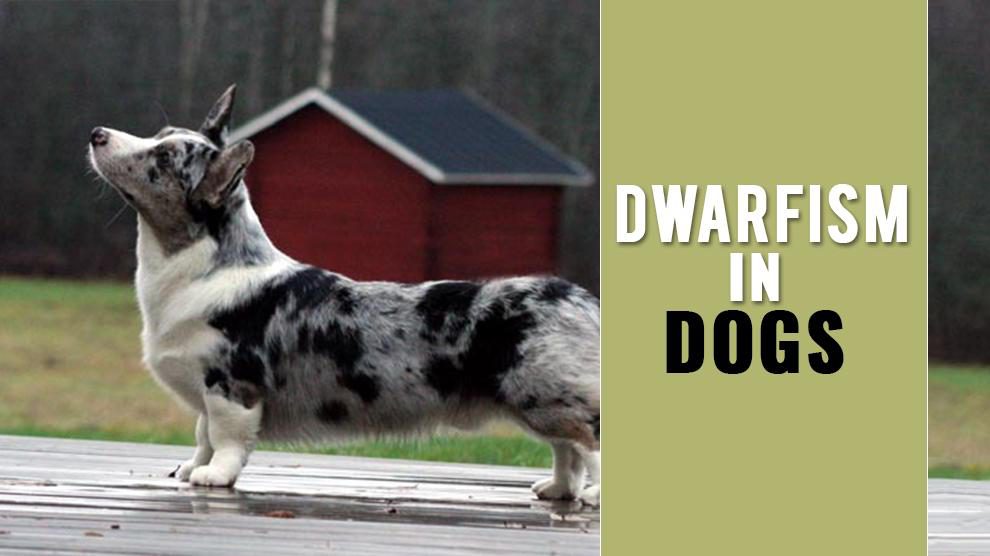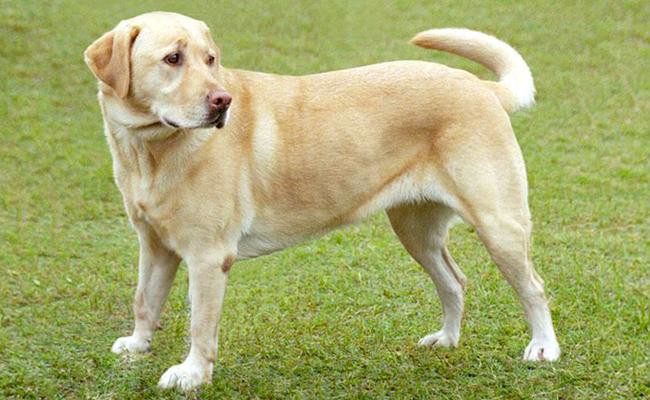- Dwarfism In Dogs
- Signs Of Dwarfism In Dogs
- Dog Breeds Easily Susceptible To Dwarfism
- Diagnosis Of Dwarfism In Dogs
- Side-Effects Of Dwarfism In Dogs
- Pituitary Dwarfism Or Juvenile Panhypopituitarism
- Treating Dwarfism In Dogs
- Prognosis Of Dwarfism
- Dwarfism In Labrador Retrievers
- Dwarfism In German Shepherds
Dog Pregnancy Calculator And Timeline
Some dogs may be bred for short stature. Unfortunately, there are some dogs that suffer from this not induced condition called dwarfism in dogs. They have skeletal diseases that result in this painful illness and short stature.
The canines that suffer from this disease remain much smaller than their average size. These deformities associated skeletal disorder cause much pain in the puppyhood which will transcend to the adulthood also.
Dwarfism In Dogs
Dwarfism refers to a condition where the subject suffers severe under-development. Most dwarf dogs suffer from a condition called “Osteochondrodysplasia”.
In this condition, the affected dogs suffer from the development and growth of cartilage or bone. Sometimes, some dog breeds such as Corgis and Dachshunds are bred to produce genetically dwarf breeds.
Dogs with skeletal problems may suffer from pain and discomfort based on the severity and nature of deformities.
Signs Of Dwarfism In Dogs
Based on the type of dwarfism, the dog may show signs of stunted growth and skeletal deformities.
These may include
- Occasional spinal pain
- Occasional spinal deviations
- Distended abdomen
- Bulging eyes
- Protruding tongue
- Excessive panting
- Stertorous respiration
- Dyspnea or breathing difficulty
- Depressed nasal bridge
- Underbite
- Short upper jaw
- Abnormal lower jaw
- Bowed legs
- Short Legs
Dog Breeds Easily Susceptible To Dwarfism
Dog breeds that are more prone to dwarfism include
- Great Dane
- English Pointer
- Samoyed
- Beagle
- Miniature Poodle
- Irish Setter
- Bull Terrier
- Great Pyrenees
- Alaskan Malamute
- Scottish Deerhound
- Scottish Terrier
- Cocker Spaniel
- Norwegian Elkhound
- Labrador Retriever
Diagnosis Of Dwarfism In Dogs
In most cases, blood test and urinalysis appear normal in these dogs. The history, breed, and the dog appearance are enough to help your vet determine dwarfism in dogs.
X-rays help to locate the extent of dwarfism and bone biopsies can also detect dwarfism.
Hormonal testing reveals the presence of pituitary dwarfism in dogs. Magnetic resonance and computed tomography can identify pituitary cysts in pituitary glands.
Side-Effects Of Dwarfism In Dogs
Dwarf dogs may show signs including pain and discomfort during puppyhood. This happens in dog breeds that are consciously bred to grow as dwarfs.
Some dwarf dogs also suffer from severe breathing issues due to malformed skulls and inadequate nasal passageways.
Dwarf dogs have problems with regard to reproduction also. Due to their abnormal short stature, long bodies, and large heads, dwarf dogs undergo birth issues.
Short-statured dogs including Basset Hounds, Corgis, and Dachshunds have spinal abnormalities including intervertebral disk disease.
Pituitary Dwarfism Or Juvenile Panhypopituitarism
Miniature Pinschers, Spitz, Labrador Retrievers, Weimaraners, Carnelian Bear Dogs, and German Shepherd dogs are prone to pituitary dwarfism.
Signs of a dog suffering from pituitary dwarfism include:
- Shortened life expectancy
- Megaesophagus
- Cardiac abnormalities
- Abnormal behavior
- Under-developed genitalia
- Skin abnormalities
- Patchy areas of hair loss or alopecia
- Delayed dental eruption
- Stunted growth
Treating Dwarfism In Dogs
Some dogs may need nothing or very little treatment. Neutering and spaying mature dogs can prevent the spread of this disorder. Vets may administer hormone injections or perform surgery to correct the dog’s leg bone.
Dogs with light dwarfism can manage with anti-inflammatory drugs to control joint pain.
Prognosis Of Dwarfism
Most dogs may lead healthy, happy lives full of belly rubs and long walks. Some labs may suffer from shortened life expectancy. Dwarf dogs need all your love and care and you should avoid breeding them.
Dwarfism In Labrador Retrievers
Causes Of Dwarfism In Labrador Retrievers
There are two different forms of gene variants that lead to dwarfism in Labradors. SD1 causes these dogs to have bent legs. SD2 causes the Labrador to have shorter legs compared to normal, healthy dogs from the same breed.
Dwarfism in Labrador retriever occurs due to problems in the dog’s pituitary gland. Hypopituitarism is a condition where the pituitary gland works inefficiently and results in the lack of growth hormone.
A Labrador retriever who remains healthy and strong at birth will be much smaller than his mates by three months of age.
In some dogs, the pituitary gland remains under-developed because of disease or damage. Any of these conditions give rise to a dog which suffers from dwarfism.
Certain factors that result in dwarfism in dogs include
- Hormonal imbalance
- Hormone deficiency or hyposomatotropism
- Skeletal dysplasia
- Glycogen storage disease
- Diabetes mellitus
- Hyperadrenocorticism (abnormal production of adrenal)
- Hypoadrenocorticism ( Addison’s disease)
- Water retention in the brain
- Hypothyroidism
- Kidney disease
- Portosystemic Shunts
- Malnutrition
Preventing Dwarfism In Labrador Retrievers
Dwarf dogs should be avoided as a precaution in breeding programs. The most effective way to control dwarfism is to manage the gene pool effectively.
Dwarfism In German Shepherds
Dwarfism in German Shepherds is a common problem and this condition is not only restricted to this dog breed. Just like humans appear in various sizes and shapes, so do German Shepherds.
Male Germans consists of a shoulder height between 21.5-24.5 inches and females 21.5-23.5 inches. Dwarfism in this breed is set to occur when males and females have a height less than 21.5 inches.




















